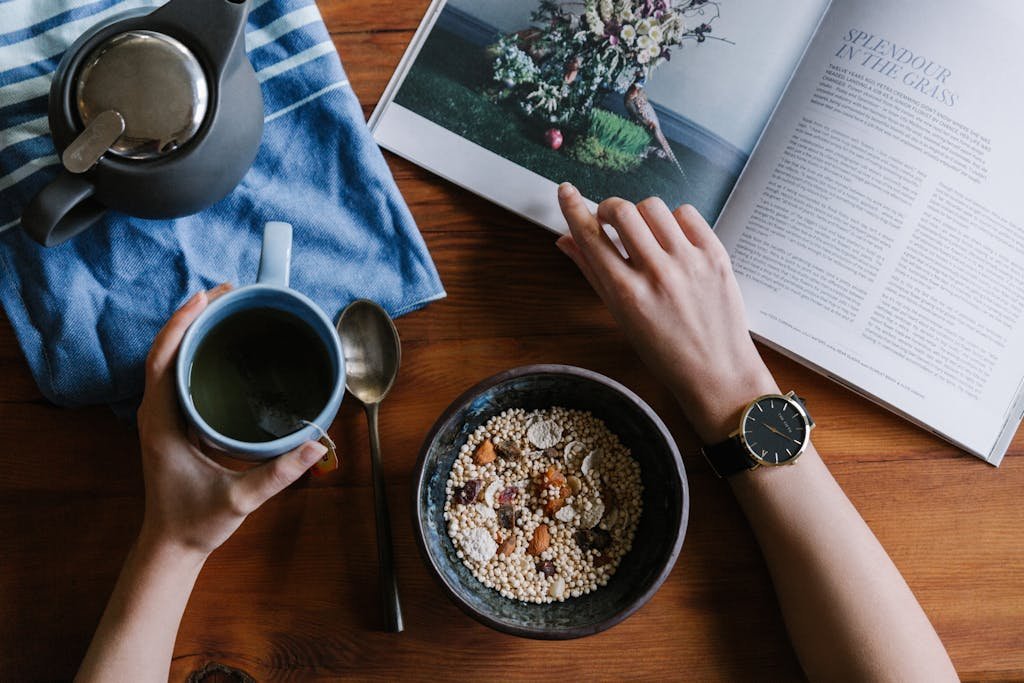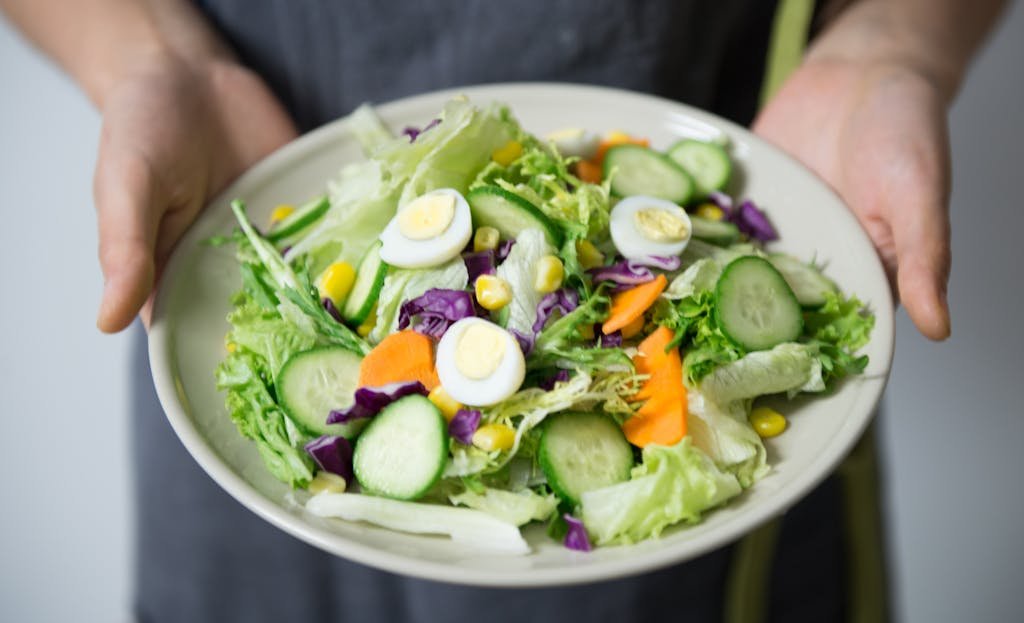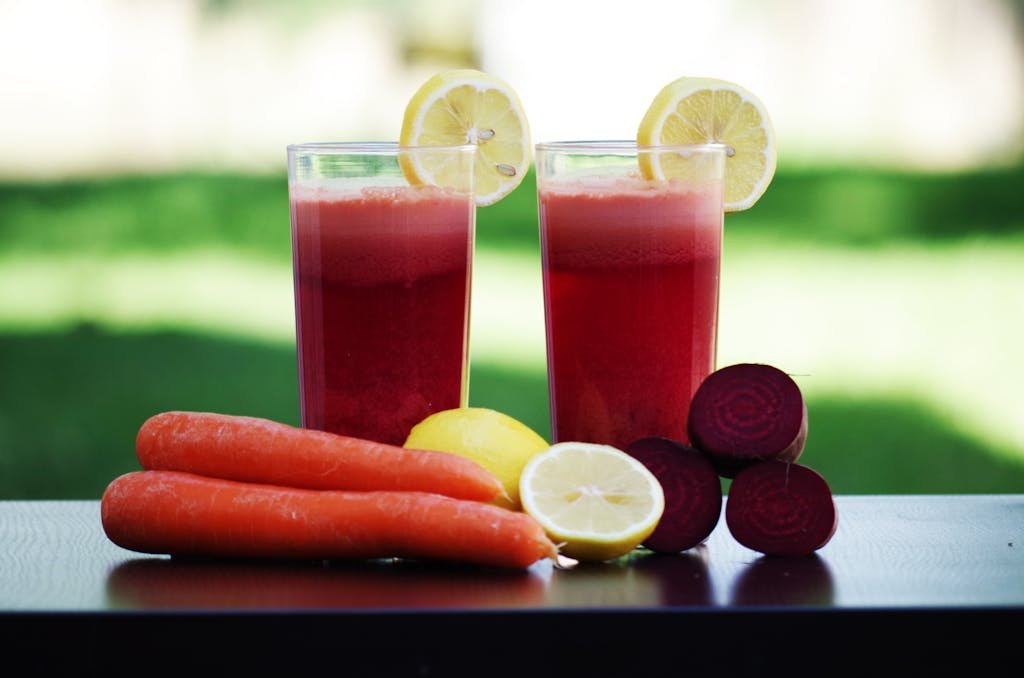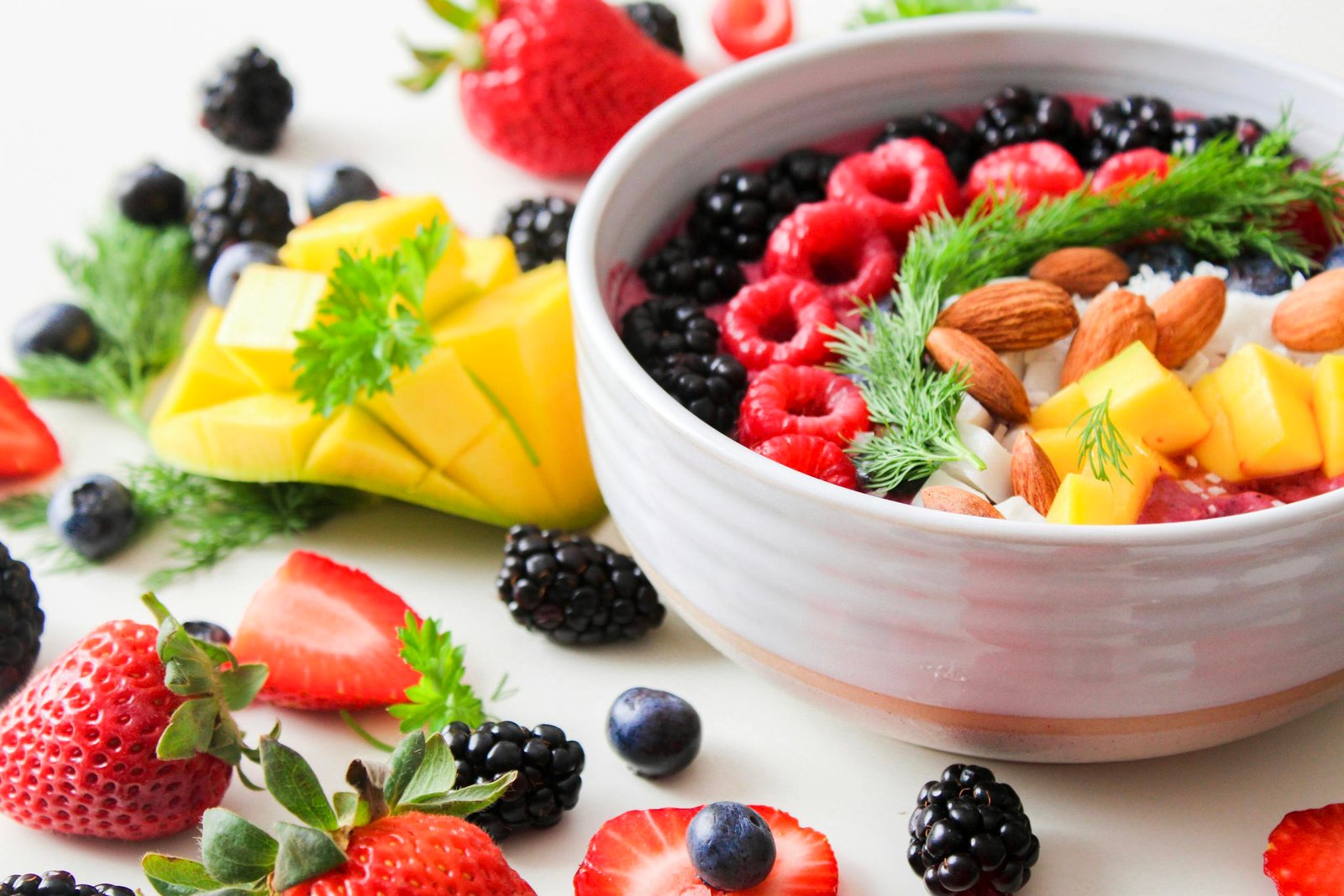Paleo Diet Meal Plan: Delicious & Easy Recipes
Imagine eating the way our ancestors did—no processed foods, no sugary drinks, just wholesome, natural ingredients that fuel your body and mind. The Paleo diet, often called the “caveman diet,” has taken the world by storm, with countless success stories of weight loss, increased energy, and overall improved health. Studies show that people who follow a Paleo diet may reduce their risk of chronic diseases like diabetes, heart disease, and even certain cancers. But what exactly can you eat on this diet? Let’s break it down.
The Paleo diet is based on the idea of eating foods that mimic the diet of our Paleolithic ancestors. It’s not just another low-carb or restrictive diet but focuses on whole, unprocessed foods that humans are naturally designed to eat. By eliminating processed foods, grains, and dairy, you might see improvements in digestion, energy levels, and weight management. In this guide, I’ll provide an extensive Paleo food list that makes sticking to this lifestyle easier while giving your body the nutrients it truly needs.
This article will offer a comprehensive and informative guide to the Paleo diet’s food list, covering all the essentials, from meats and vegetables to healthy fats, and how to avoid common pitfalls like grains and legumes.
Understanding the Paleo Diet

What Makes the Paleo Diet Unique?
The Paleo diet stands apart because it promotes eating like our ancestors, who lived long before agriculture became widespread. It’s about going back to basics: meat, fish, fruits, vegetables, and natural fats. Foods that require heavy processing or artificial additives are strictly off-limits. If a caveman didn’t eat it, neither should you.
By emphasizing nutrient-dense, whole foods, this diet encourages better eating habits that are naturally low in sugar, free of unhealthy fats, and filled with vitamins and minerals.
Core Principles of the Paleo Diet
At the heart of the Paleo diet is the focus on unprocessed, natural foods. This means no grains, no dairy, and no processed sugar. Instead, you focus on eating foods that can be found in nature. A key principle is to avoid foods that lead to inflammation or disrupt gut health, such as refined grains, sugar, and industrial seed oils.
The primary goal? Simplicity. If it wasn’t something our ancestors could hunt, fish, or gather, it likely wouldn’t belong on your plate.
Nutritional Benefits of the Paleo Diet
The Paleo diet offers several health benefits that extend beyond weight loss. While everyone’s experience varies, many individuals report improvements in several areas:
- Weight Management: By eliminating refined carbs and processed sugars, the Paleo diet can naturally lead to weight loss and better management of hunger cues.
- Gut Health: By removing inflammatory foods like grains and dairy, many people notice better digestion and reduced bloating.
- Increased Energy Levels: Whole, unprocessed foods offer a more stable source of energy than the sugar and carb-heavy Standard American Diet (SAD).
- Better Blood Sugar Control: Focusing on low-glycemic fruits and vegetables helps to stabilize blood sugar levels and may reduce the risk of type 2 diabetes.
The Paleo Food List: A Comprehensive Guide

Meat and Seafood Options
One of the pillars of the Paleo diet is the consumption of high-quality meats and seafood. Protein is essential for muscle repair, metabolic health, and satiety, and Paleo encourages you to choose the best sources.
Types of Meat
- Grass-Fed Beef: Unlike conventional beef, grass-fed options provide higher levels of Omega-3 fatty acids and antioxidants. It’s a more natural option for your health and the environment.
- Poultry: Chicken, turkey, and other poultry are Paleo staples. Opt for pasture-raised, organic poultry to ensure you’re getting the highest quality.
- Pork: While pork is Paleo-friendly, it’s best to choose pasture-raised, unprocessed options to avoid harmful additives found in many commercial pork products.
- Wild Game: Venison, elk, and bison are excellent Paleo-friendly alternatives to traditional meats. These options are leaner and higher in nutrients due to their natural diet.
Seafood Options
- Fish: Fatty fish like salmon, mackerel, and sardines are rich in Omega-3s and are anti-inflammatory. Wild-caught is always preferred over farmed fish.
- Shellfish: Shrimp, crab, and lobster are also Paleo-friendly and provide high-quality protein with fewer calories.
Preparation Methods
Paleo cooking encourages simple, whole-food preparation methods. Grilling, roasting, and baking are popular because they preserve the nutritional integrity of the food while avoiding added fats or unhealthy oils. I always recommend staying away from frying in seed oils, which can be highly inflammatory.
Fruits and Vegetables: Filling Your Plate with Color
Fruits and vegetables form the backbone of a healthy Paleo diet. They provide essential vitamins, minerals, and fiber, helping to support everything from digestion to immune function.
Variety is Key
Seasonal, organic fruits and vegetables are the best options when following the Paleo diet. Not only do they taste better, but they also provide a wider array of nutrients. Whenever possible, try to eat what’s in season to get the freshest, most nutrient-dense options.
Low-Sugar Fruits
- Berries: Blueberries, strawberries, and raspberries are packed with antioxidants but low in sugar.
- Avocados: Though technically a fruit, avocados are beloved in the Paleo community for their healthy fat content and versatility.
Nutrient-Dense Vegetables
- Leafy Greens: Kale, spinach, and collard greens are loaded with fiber, vitamins, and minerals. They’re perfect for salads, smoothies, or side dishes.
- Cruciferous Vegetables: Broccoli, cauliflower, and Brussels sprouts are particularly beneficial for gut health and provide important nutrients like vitamin C and fiber.
Healthy Fats: Fueling Your Body Right
Healthy fats are essential to the Paleo diet, providing long-lasting energy and supporting brain function. Unlike many conventional diets, Paleo doesn’t fear fat—instead, it celebrates natural, nutrient-rich fat sources.
Best Sources of Paleo Fats
- Avocado: Whether spread on toast (Paleo-friendly, of course!) or added to a salad, avocados provide heart-healthy monounsaturated fats.
- Olive Oil: A staple in Paleo cooking, olive oil is full of antioxidants and anti-inflammatory compounds.
- Nuts and Seeds: Almonds, walnuts, chia seeds, and flaxseeds are excellent for snacking or adding to recipes for an extra boost of nutrients.
Omega-3 Fatty Acids
One of the most important types of fats you’ll find in the Paleo diet is Omega-3 fatty acids. They’re anti-inflammatory and support heart and brain health. Fatty fish like salmon and walnuts are great sources of these essential fats.
Eggs: The Versatile Paleo Superfood
Eggs are a staple of the Paleo diet due to their versatility and nutrient density. They’re an excellent source of high-quality protein, vitamins, and healthy fats.
Pasture-Raised Eggs
Whenever possible, opt for pasture-raised eggs. These eggs come from chickens that have roamed freely and eaten a natural diet, leading to eggs that are richer in nutrients like Omega-3s and vitamin D.
Using Eggs in Your Paleo Diet
Eggs are one of the most versatile ingredients. They can be scrambled, fried, boiled, or baked into dishes. They’re perfect for breakfast or as a quick and easy snack.
Nuts and Seeds: The Ultimate Paleo Snacks
Nuts and seeds are fantastic Paleo-friendly snacks, providing protein, fiber, and healthy fats. They’re also incredibly versatile and can be used in everything from baking to salads.
Top Paleo-Friendly Nuts and Seeds
- Almonds: Rich in vitamin E, almonds are a great snack on the go.
- Walnuts: Known for their Omega-3 content, walnuts are perfect for brain health.
- Chia Seeds & Flaxseeds: Both are rich in fiber and can be used in smoothies, baked goods, or as an egg substitute in some recipes.
Read Also: Freeze-Proof Your Pipes: No Heat Needed!
Foods to Avoid on the Paleo Diet

Grains
The Paleo diet strictly avoids all grains, including wheat, rice, corn, and oats. Grains are often linked to inflammation and digestive issues, making them a no-go for anyone following a strict Paleo lifestyle.
Legumes
Beans, lentils, peas, and other legumes are also excluded from the Paleo diet. While legumes can offer protein and fiber, they contain anti-nutrients like lectins and phytic acid, which can interfere with digestion and nutrient absorption.
Processed Foods
One of the key rules of the Paleo diet is to eliminate processed foods. This means no sugary drinks, packaged snacks, or any products with artificial additives. Instead, focus on whole, nutrient-dense foods that nourish your body.
Flexibility and Customization: Tailoring Paleo to Your Needs

Dietary Restrictions and Customization
One of the great things about the Paleo diet is its flexibility. If you have dietary restrictions, such as food allergies or intolerances, the Paleo diet can be adapted to suit your needs. You can easily avoid specific foods while still following the core principles of the diet.
Modified Paleo Approaches
Several variations of the Paleo diet exist, including the Autoimmune Protocol (AIP) for those with autoimmune conditions and the Specific Carbohydrate Diet (SCD) for those with digestive issues. These approaches fine-tune the Paleo principles to meet specific health goals.
Incorporating Occasional Indulgences
Many Paleo followers incorporate cheat days or occasional treats into their routine. While it’s important to stay true to Paleo principles most of the time, allowing yourself occasional indulgences can help you stick to the diet long-term without feeling deprived.
Meal Planning and Recipes for a Successful Paleo Diet

Weekly Paleo Meal Plans
To make it easier for you to stick to the Paleo diet, planning your meals is crucial. A typical week on Paleo might look something like this:
| Day | Breakfast | Lunch | Dinner |
|---|---|---|---|
| Monday | Scrambled eggs with avocado | Grilled chicken salad | Grass-fed beef with roasted veggies |
| Tuesday | Paleo smoothie (berries, spinach) | Tuna lettuce wraps | Baked salmon with broccoli |
| Wednesday | Omelet with spinach and tomatoes | Zucchini noodles with ground turkey | Pork chops with sweet potatoes |
| Thursday | Chia pudding with almonds | Grilled shrimp with mixed greens | Bison burgers with cauliflower rice |
| Friday | Fried eggs with bacon | Chicken soup with bone broth | Steak with sautéed mushrooms |
Recipe Ideas
- Breakfast: Scrambled eggs with spinach, mushrooms, and avocado.
- Lunch: Zucchini noodles with homemade marinara and ground beef.
- Dinner: Grilled wild-caught salmon with roasted Brussels sprouts.
- Snacks: A handful of walnuts and apple slices.
Tips for Success on the Paleo Diet

Grocery Shopping Tips
When shopping for Paleo-friendly foods, stick to the perimeter of the store where fresh produce, meats, and seafood are located. Avoid the aisles with processed, packaged foods. Stores like Whole Foods and farmers’ markets often have high-quality Paleo options.
Meal Prep Strategies
Prepare your meals in advance to make sticking to the Paleo diet easier throughout the week. Batch cooking proteins and chopping veggies ahead of time can save you hours during busy weekdays.
Eating Out While Staying Paleo
Navigating restaurant menus while on the Paleo diet can be tricky, but not impossible. Opt for grilled meats, salads without dressing, and steamed vegetables. Many restaurants also allow you to customize your order to fit your needs.
Overcoming Common Challenges
The most common challenges when starting Paleo include carb cravings and convenience. To tackle these, keep Paleo-friendly snacks like nuts or dried fruit on hand and experiment with Paleo versions of your favorite dishes.
Read Also: Banish Fruit Germs with Baking Soda!
Closing Words
The Paleo diet is more than just a fad—it’s a lifestyle that emphasizes clean, whole, unprocessed foods. Whether you’re looking to lose weight, improve your gut health, or just feel more energized, the Paleo food list can guide you toward a healthier, more balanced way of eating. I encourage you to start small, incorporate these nutrient-dense foods into your diet, and take the first steps toward a healthier you.







